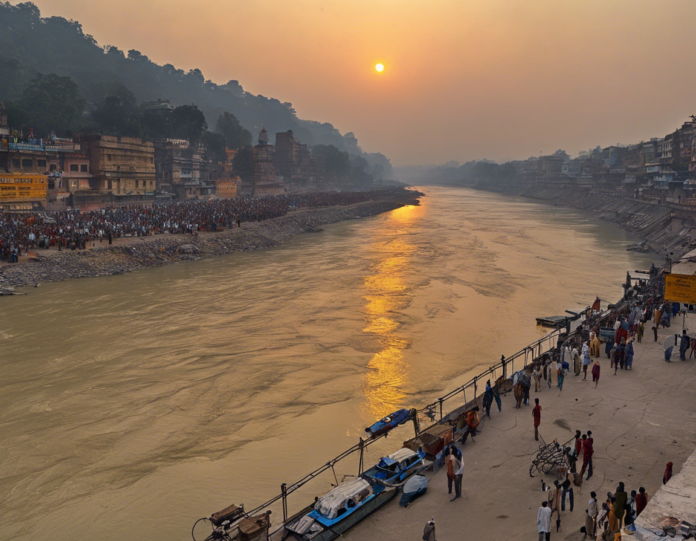Introduction
The Ganga River, considered the most sacred river in India, holds a significant position in the hearts and minds of millions of people. Originating from the Himalayas and flowing through the northern plains of India, the Ganga is not just a river but a symbol of spiritual purity, sustenance, and rejuvenation. In this article, we will delve into the cultural, religious, environmental, and socio-economic significance of the sacred Ganga River.
Cultural and Spiritual Significance
The Ganga River holds immense cultural importance in India. Hindus consider the Ganga as a goddess, Ganga Ma, and believe that bathing in its waters can wash away sins and lead to salvation. The river is also an integral part of various rituals and ceremonies, including immersion of ashes after cremation, which is believed to help the departed souls attain moksha or liberation.
Pilgrimage Sites along the Ganga
The Ganga River flows through many important pilgrimage sites, such as Haridwar, Varanasi, Rishikesh, and Allahabad. These cities hold immense religious significance, and millions of devotees visit these places to take a holy dip in the sacred waters of the Ganga.
Environmental Importance
Apart from its cultural and religious significance, the Ganga River plays a crucial role in the environment and ecosystem of the region. The river basin supports a rich biodiversity and provides irrigation to millions of hectares of agricultural land. However, due to pollution from industrial waste, sewage, and garbage dumping, the river is facing severe environmental degradation.
Government Initiatives and Challenges
The Indian government has initiated various programs like the Ganga Action Plan and Namami Gange to clean and rejuvenate the Ganga River. Despite these efforts, challenges such as lack of proper waste management, encroachments, and illegal sand mining continue to pose a threat to the river’s health.
Socio-Economic Impact
The Ganga River also holds significant socio-economic importance. It serves as a lifeline for millions of people who depend on it for drinking water, agriculture, and livelihoods. The river also supports a thriving tourism industry, attracting both domestic and international visitors.
Conclusion
The Ganga River, with its rich cultural, spiritual, environmental, and socio-economic significance, is not just a river but a way of life for millions of people in India. Preserving and protecting this sacred river is not just a necessity but a moral obligation for the well-being of current and future generations.
Frequently Asked Questions (FAQs)
- Why is the Ganga River considered sacred in India?
-
The Ganga River is considered sacred in India due to its significance in Hindu mythology and scriptures. It is believed to have purifying powers that can cleanse the soul and lead to salvation.
-
What are some popular pilgrimage sites along the Ganga River?
-
Some popular pilgrimage sites along the Ganga River include Haridwar, Varanasi, Rishikesh, and Allahabad.
-
What is the environmental condition of the Ganga River?
-
The Ganga River is facing severe environmental degradation due to pollution from industrial waste, sewage, and garbage dumping.
-
What are some government initiatives to clean the Ganga River?
-
The Indian government has initiated programs like the Ganga Action Plan and Namami Gange to clean and rejuvenate the Ganga River.
-
How does the Ganga River support the socio-economic life of people in India?
-
The Ganga River serves as a lifeline for millions of people by providing drinking water, supporting agriculture, and generating livelihoods for the local population.
-
What are the challenges faced in protecting the Ganga River?
-
Challenges in protecting the Ganga River include lack of proper waste management, encroachments, illegal sand mining, and industrial pollution.
-
What is the significance of bathing in the Ganga River?
-
Bathing in the Ganga River is believed to cleanse the body and soul, wash away sins, and bring spiritual purification according to Hindu beliefs.
-
How does the Ganga River impact the biodiversity of the region?
-
The Ganga River supports a rich biodiversity in its basin, providing a habitat for various species of flora and fauna.
-
What role does the Ganga River play in agriculture?
-
The Ganga River provides irrigation to millions of hectares of agricultural land, supporting the livelihoods of farmers in the region.
-
How can individuals contribute to the conservation of the Ganga River?
- Individuals can contribute to the conservation of the Ganga River by reducing waste generation, promoting sustainable practices, and supporting initiatives aimed at cleaning and rejuvenating the river.
